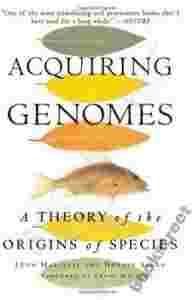|
From one of the great iconoclasts of modern biology,
a groundbreaking work that sets out, for lay and
scientific readers alike, a new theory of the origins of
species How do new species evolve? Although Darwin
identified inherited variation as the creative force in
evolution - the raw source for the origin of new species
- he never figured out where it comes from. His
successors, known as neo-Darwinists, thought they had
discovered the answer when they merged evolutionary
theory with modern genetics: new species arise from the
gradual accumulation of random mutations of DNA. But
despite its acceptance in every major textbook, there is
no documented instance of a new species actually arising
by this means. And since random mutation was the only
accepted mechanism, this meant that, for a full century
and a half after Darwin published his theory of the
origin of species, there was not a single generally
accepted instance of an origin of any species. The
distinguished biologist Lynn Margulis and the writer
Dorion Sagan take a radically new approach to this
question.They have combed a huge range of obscure
reports to show that speciation events are not, in fact,
rare or hard to observe. Origins of Species
demonstrates, with well-documented examples drawn from
every part of the living world, that most species
originate when different types of organisms merge their
genomes. Genomes are acquired by infection, feeding, and
other ecological associations, and then inherited. This
is the first work to integrate and analyze the
overwhelming mass of evidence, now scattered in obscure
journals, for the role of bacterial and other symbioses
in the creation of plant and animal diversity. Sure to
be seen as a groundbreaking and controversial book, it
provides the most powerful explanation of speciation yet
given. |
|

